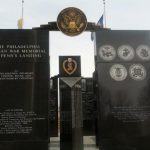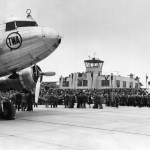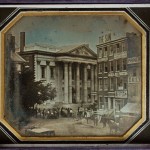Greater Philadelphia
Essay
Civic boosters in the late nineteenth century adopted “Greater Philadelphia” as a phrase denoting aspirations for progress as well as way of describing the region including Philadelphia and extending beyond its boundaries. For more than a century since, numerous businesses and other organizations, including The Encyclopedia of Greater Philadelphia, have signaled their regional scope by adopting this phrase. This layer of the Encyclopedia emphasizes topics that cross the region of Philadelphia, southeastern Pennsylvania, South Jersey, and Delaware, including governance, geography and settlement patterns, infrastructure, transportation, and social issues.
Related Topics: Regional Connections and Impact
Locations
- Bucks County, Pennsylvania
- Chester County, Pennsylvania
- Delaware County, Pennsylvania
- Montgomery County, Pennsylvania
- Camden County, New Jersey
- Cumberland County, New Jersey
- Salem County, New Jersey
- Gloucester County, New Jersey
- Burlington County, New Jersey
- New Castle County, Delaware
Essays
- Greater Philadelphia Region
- Courthouses (County)
- Polish Settlement and Poland
- Main Line of Public Works
- Aeronautics and Aerospace Industry
- Colonial Revival
- Great Wagon Road
- Moravians
- Turnpikes
- Dinosaurs and Paleontology (Study of Fossils and Prehistoric Life)
- Trenton, New Jersey
- Reading Terminal Market
- Ceramics
- Seventh-day Adventists
- Lawnside, New Jersey
- Wilmington, Delaware
- Philadelphia Contributionship
- Train Derailments and Collisions
- Glassmakers and Glass Manufacturing
- Philadelphia Cream Cheese
- Railroad Suburbs
- Historic Preservation
- Orchard Window (The)
- Bakeries and Bakers
- Grocery Stores and Supermarkets
- Horticulture
- Garment Work and Workers
- Shrines
- Saws and Saw Making
- Community Colleges
- Philadelphia Folk Festival
- Silver Linings Playbook
- Paper and Papermaking
- Underground Railroad
- Silk and Silk Makers
- Delaware Bay
- Soccer
- Bridgeton, New Jersey
- Plays and Playwrights
- Mennonites
- Cathedral Basilica of Saints Peter and Paul
- Environmental Movement
- Irish (The) and Ireland
- Mexican-American War
- Independence Seaport Museum
- Machining and Machinists
- Hurricanes and Tropical Storms
- Historic Districts
- Prisons and Jails
- Zoning (Philadelphia)
- Hospitals (Economic Development)
- Doylestown, Pennsylvania
- Mount Holly Township, New Jersey
- Jewelers Row
- South Asians
- Dogfighting
- Dogs
- Gas Stations
- Cold War
- Dispensaries
- Brickmaking and Brickmakers
- Nuclear Power
- Philadelphia County, Pennsylvania
- Pacific World (Connections and Impact)
- Armories
- Scots Irish (Scotch Irish)
- Dutch (The) and The Netherlands
- Chester County, Pennsylvania
- Woman Suffrage
- Women’s Clubs
- Freedom Train
- Opera and Opera Houses
- Thrift
- Boarding and Lodging Houses
- Bicycles
- Bartram’s Garden
- Police Athletic League
- Nursing
- Newspapers (Suburban)
- Red Arrow Lines
- Lehigh Valley
- West Chester, Pennsylvania
- Genealogy
- Mexicans and Mexico
- Woodbury, New Jersey
- Eugenics
- Edge Cities
- ENIAC
- Roman Catholic Parishes
- Inner Suburbs
- Hotels and Motels
- Smoking and Smoking Regulations
- Convents
- Delaware River Basin Commission
- Crowds (Colonial and Revolution Eras)
- Works Progress Administration (WPA)
- Television Shows (About Philadelphia)
- Militia
- Lotteries
- Philadelphia Ten
- Horses
- Puerto Rico and Puerto Ricans
- Spanish-American War
- Automobile Racing
- Cycling (Sport)
- Historical Societies
- Iron Production
- Norristown, Pennsylvania
- Public Media
- Cricket
- Mansions
- New Year’s Traditions
- Tomato Pie
- United States Colored Troops
- National Guard
- Deindustrialization
- Civil Defense
- Shoemakers and Shoemaking
- Helicopters
- High School Sports
- Hinterlands
- Big 5
- Nigerians and Nigeria
- Tobacco
- City Beautiful Movement
- Vietnam War
- Infectious Diseases and Epidemics
- Boxing and Boxers
- Mummers
- Mighty Macs
- Korean War
- Community Development Corporations (CDCs)
- Chemical Industry
- Meteorology (Study of the Atmosphere)
- Ornithology (Study of Birds)
- Radio DJs
- Presidents of the United States (Presence in Region)
- Landfills
- Veterans and Veterans’ Organizations
- Manufacturing Suburbs
- Coffeehouses
- Loyalists
- Public Markets
- New Sweden
- Barbershops and Barbers
- Coal
- Arts of Wharton Esherick
- Diners
- Surveying (Colonial)
- Pennsylvania (Founding)
- Radio (Commercial)
- Country Clubs
- Blue Route
- Camden, New Jersey
- Garbage Barge (Khian Sea)
- King of Prussia, Pennsylvania
- Entomology (Study of Insects)
- Bank of the United States (First)
- Lafayette’s Tour
- Tourism
- Typhoid Fever and Filtered Water
- Trails (Indian)
- Smith’s and Windmill Islands
- Puerto Rican Migration
- Model Cities
- Prehistoric Native Peoples and Archaeology
- First Purchasers of Pennsylvania
- Buses
- Bank War
- Lower Delaware Colonies (1609-1704)
- Abscam
- Admiral Wilson Boulevard
- Co-Working Spaces
- Atlantic City, New Jersey
- Educational Reform
- Railroad Stations
- Brownfields Redevelopment
- Sprawl
- Vigilance Committees
- Automobiles
- Automotive Manufacturing
- Garies (The) and Their Friends
- Native American-Pennsylvania Relations 1681-1753
- Schuylkill Navigation Company
- I-95
- Street Vendors
- Art Colonies
- Delaware Valley Regional Planning Commission
- Philadelphia (Warship)
- Films (Feature)
- Monopoly
- Point Breeze (Bonaparte Estate)
- Levittowns (Pennsylvania and New Jersey)
- Ferries
- Pipelines
- Radio (High School and College)
- Streetcar Suburbs
- Roosevelt Boulevard
- Vine Street Expressway
- Printmaking
- Bootlegging
- Martin Luther King Jr. Day
- Media, Pennsylvania
- Plantations
- Prohibition
- Pennsylvania Hall
- Fries Rebellion
- Maps and Mapmaking
- National Parks
- Lewis and Clark Expedition
- Chester, Pennsylvania
- Pennsylvania Impressionism
- Native and Colonial Go-Betweens
- Private (Independent) Schools
- Football (Professional)
- Proclamation Line of 1763
- Canals
- Native American-Pennsylvania Relations, 1754-89
- Appeal of Forty Thousand Citizens
- Airports
- Railroads
- Duffy’s Cut
- Forts and Fortifications
- Casinos
- Tastykake
- Schuylkill Expressway
- Walking Purchase
- Murder of Octavius Catto
- Seven Years’ War
- Colonization Movement (Africa)
- Trenton and Princeton Campaign (Washington’s Crossing)
- PATCO
- SEPTA
- Television
- Mason-Dixon Line
- Scrapple
- Hog Island
- Crime
- U.S. Congress (1790-1800)
- Columbus Day
- Philadelphia Industrial Development Corporation (PIDC)
- Immigration and Migration (Colonial Era)
- Lynching
- Cemeteries
- Baseball (Professional)
- World War I
- Pontiac’s War and the Paxton Boys
- Valley Forge
- Immigration (1870-1930)
- Higher Education: Private (Religious)
- Baseball: Negro Leagues
- Education and Opportunity
- March of the Mill Children
- Trees
- Public Education: Suburbs
- African American Migration
- Insurance
- Recording Industry
- Byberry (Philadelphia State Hospital)
- Immigration (1790-1860)
- Streetcars
- Great Depression
- Immigration (1930-Present)
- Paints and Varnishes
- Printing and Publishing
- Public Transportation
-
Roman Catholic Education
(Elementary and Secondary) - Shopping Centers
- Fox Hunting
- Delaware Avenue (Columbus Boulevard)
- Public Education: High Schools
- American Civil Liberties Union (ACLU)
- Consolidation Act of 1854
- Delaware River Port Authority
- Shipbuilding and Shipyards
- Flaxseed and Linen
- Industrial Workers of the World
- Banking
- Commuter Trains
-
Philadelphia and Its People in Maps:
The 1790s - Omnibuses
- Public Housing
- AIDS and AIDS Activism
- World War II
- Yellow Fever
- Influenza (“Spanish Flu” Pandemic, 1918-19)
- Department Stores
- Cholera
- Lazaretto
- Trails (Recreational)
- West New Jersey
- Earthquakes
- Almanacs
- Salem (City), New Jersey
- Pollution
- Bridges
- War in Afghanistan
- Schuylkill River
- Child Labor
- Brandywine Valley
- Blues Music
- Automobile Suburbs
- Percent for Art Programs
- Lenape People (Continuing Presence)
- Candy and Candymakers
- Civil Rights (Women)
- Lancaster Avenue
- Buddhism
Map
The prominent locations of courthouses in the architectural landscape of Philadelphia and the surrounding region mirrored their positions as cornerstones of civic life. Thomas U. Walter designed the Chester County Courthouse in the 1840s.

The Colonial Revival expressed nostalgia for the Colonial and Revolutionary eras through architecture, landscape design, and material culture, including the reconstruction of William Penn's Pennsbury Manor.

The Philadelphia area has played a major part in paleontology, yielding discoveries that have helped to illuminate millions of years of existence. Fossils found at the former Inversand Quarry in Sewell, N.J., date to the Cretaceous Period.
Lawnside, New Jersey, has been one of only a handful of jurisdictions in the United States that has maintained a primarily African American population throughout its existence.

Delaware’s largest city and the New Castle County seat originated as a colonial trading area and ferry crossing and later became one of the country’s most vital industrial and chemical-producing centers.

Glassmakers and Glass Manufacturing
An industry active throughout the region, in the nineteenth century, glassmaking continued in Millville, New Jersey, into the twenty-first century.

Baking, one of the earliest businesses in Philadelphia, ranged from small neighborhood bakeries to large companies like the Tasty Baking Company, headquartered by the twenty-first century at the Philadelphia Navy Yard.
Philadelphia ranked as one of the nation’s foremost saw manufacturing centers for much of the nineteenth and twentieth centuries. By the mid-nineteenth century a number of major saw manufacturers operated in the city, including the world’s largest, Henry Disston’s Keystone Saw Works.
Two-year, public colleges—commonly known as community colleges—became a fixture in the Philadelphia area in the second half of the twentieth century. The Community College of Philadelphia opened in 1965.

The Philadelphia Folk Festival, founded by Kenneth S. Goldstein and Gene Shay, welcomes thousands of guests and campers each year. Since 1965, it has taken place at Old Poole Farm in Schwenksville, Pennsylvania.
The Oscar-winning 2012 movie 'Silver Linings Playbook' was filmed in and around Philadelphia, including the Llanerch Diner in Upper Darby, Delaware County.

Philadelphia became one of the nation's major manufacturers of silk in the early nineteenth century. The city's most well-known silk goods maker, Horstmann & Sons, was located at Fifth and Cherry Streets.

The Delaware Bay, one of America's premier 'maritime gateways,' contributed significantly to the Philadelphia region's economic development. The Bayshore Center in Port Norris traces much of the Bay's history.
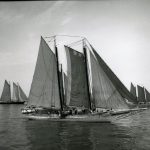
Between the late eighteenth and early twentieth centuries, Bridgeton was an economic stronghold for industries including glass, iron, clothing, machinery, and food processing. The Cumberland County seat and courthouse are located in Bridgeton.
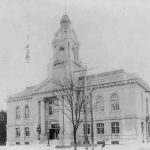
The home of Edwin Forrest, an influential Philadelphia-born actor, later became the Freedom Theatre, the oldest African American theater in Pennsylvania.

German Mennonites were among the first settlers in Philadelphia in the early 1680s. The 1770 Germantown Meetinghouse remains open as a museum and historic site.

Cathedral Basilica of Saints Peter and Paul
The Cathedral Basilica of Saints Peter and Paul, established in 1846, is the largest Catholic Church in Pennsylvania and the mother church of the Archdiocese of Philadelphia

Industrial sites like the Philadelphia Coke Co. plant in Bridesburg brought Philadelphians to the forefront of the environmental movement after World War II. Local residents continue to be active in environmental justice concerns.

Located here is a memorial to the Irish people and their suffering during the Great Famine between 1845-1850, the famine was one of many motivating factors for the Irish to immigrate to the United States.

Despite taking place in the American Southwest and Central America, the Mexican-American War (1845-48) had significant ties to the Philadelphia area. A monument to soldiers killed in the war stands in Philadelphia National Cemetery.
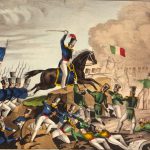
The Independence Seaport Museum is home to an extensive collection of the Greater Delaware Valley's maritime history and two iconic vessels, the Becuna submarine and the USS Olympia.

Philadelphia has a long history of machining and machinists. The Tacony Iron Works, at this location from 1881 to 1910, produced structural iron work for the tower and William Penn statue on Philadelphia's City Hall.

Hurricanes and Tropical Storms
The Greater Philadelphia area's position near the Atlantic Ocean has always made it vulnerable to hurricanes and tropical storms. When storms make landfall, the coast is particularly vulnerable due to seawalls and storm surge.
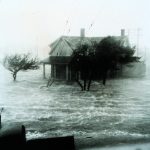
Concentrations of buildings, landscapes, and natural features that collectively reflect the region’s cultural and historical development have been recognized as historic districts. Cooper Street in Camden is one of many historic districts in the region.

Philadelphia was at the center of the early prison reform movement, first introducing individual cells at Walnut Street Prison and later solitary confinement. The city's prisons later became notorious for conducting experiments on prisoners and a high rate of incarceration.

From its inception, zoning became a fraught subject. By empowering neighborhood groups and local politicians with power over land use in their communities, zoning brought such groups in Philadelphia and elsewhere into contest with developers, industrial concerns, and sometimes with other people who wanted to move into their neighborhoods. In 1962, Mayor James Tate signed a major overhaul to the zoning code at City Hall, the first revision to the code since 1933.

Hospitals (Economic Development)
Hospitals and academic medical centers have played a central role in the economies of many major U.S. cities, including Philadelphia. The site of Philadelphia General Hospital became the multi-institution Philadelphia Center for Health Care Sciences.

Located a mile north of the Routes 611-202 convergence, thirty-five miles north of Center City Philadelphia, Doylestown has served as the government center of Bucks County for over two centuries.

Mount Holly Township, New Jersey
Mount Holly, New Jersey, established by Quakers in 1677 and known variously in its early history as Northampton and Bridgetown, became the county seat for Burlington County through an act of legislation in 1793.
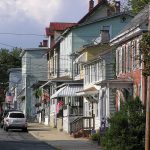
Jewelers Row in Center City Philadelphia emerged in the 1880s and over time became home to more than two hundred jewelry retailers, wholesalers, and craftsmen. The 700 block of Sansom Street has evolved throughout the nineteenth and twentieth centuries, and still houses many jewelry shops.

South Asians arrived in Philadelphia after changes in immigration policy, lured by university and skilled employment. Here they established businesses, cultural organizations, and religious centers, including several suburban Hindu Temples.

From designs evoking Greek temples built at the dawn of the automobile age to the ubiquitous utilitarian structures of the twenty-first century, gas stations have become a fixture of the Philadelphia area's landscape.

Free clinics known as dispensaries served the “working poor” from the eighteenth through the early twentieth centuries. The Philadelphia Dispensary for the Medical Relief of the Poor, considered the nation’s first, opened in 1786 and erected a new building on Fifth Street in 1801.

The city of Philadelphia was built with bricks, giving it an appearance many neighborhoods retained into the twenty-first century. The best quality brick clay was found in the 'Neck' between the Delaware and Schuylkill Rivers.

The late twentieth century proliferation of nuclear power plants and a partial meltdown at the Three Mile Island Nuclear Generating station led to widespread protests. The PECO building in Philadelphia was a frequent target.

Pacific World (Connections and Impact)
Philadelphia's connections to the Pacific World are as old as the city itself, including early participation in the China Trade and the first Japanese gardens in the United States at the Centennial Exhibition.

Presbyterian minister William Tennent founded this school in 1726 to train evangelically minded clergy. Critics mocked Tennent for attempting to educate poor country boys, derisively referring to his academy as the “Log College.”

Dutch (The) and The Netherlands
The Old Dutch House in New Castle, Delaware, dates to the seventeenth century and is believed to be one of the oldest houses in Delaware. Henry Hudson, who was employed by the Dutch East India Company, anchored in Delaware Bay in 1609, and claimed the country for the Dutch.

Mill-Rae was the home of Philadelphia suffragist Rachel Foster Avery and a meeting place for activists in the early twentieth century. Serving as Cranalieth Spiritual Center since 1996, the home also is on the National Register of Historic Places.

Although initially focused on self-improvement, women’s clubs in the Philadelphia region, like the New Century Club, quickly extended their goals to include community activism.

Carrying artifacts and documents of American History, the Freedom Train left from Broad Street Station on a journey to unify the American people against the encroaching threat of communism.

Philadelphia was once home to a number of opera houses that served as venues for its many opera companies. Three of these venues remain standing, including North Broad Street's Metropolitan Opera House.
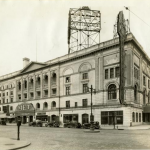
Philadelphia's boarding and lodging houses provided affordable, if less than desirable, living quarters and meals to their inhabitants. They were also a means for recent immigrants and women to support themselves and their families.

Established in 1729 by John Bartram, Bartram's Garden is the oldest botanical garden in the United States.

Established in 1947, the Philadelphia Police Athletic League has sought to foster relationships between police officers and the communities they serve.

Following World War II, suburbanization caused a major restructuring of the American newspaper industry. The Bucks County Courier Times came from a merger of the Bristol Courier and Levittown Times in 1954.

Red Arrow buses, trolleys, and trains served Philadelphia and the surrounding area from the 1950s to the late '70s. The Norristown Transportation Center, the terminus for the Market-Street Elevated, was once serviced by Red Arrow trains.

Strategically located, West Chester prospered as a county seat, lost population and businesses, then regained stature. The courthouse, built 1784-86, is the center of the historic district of West Chester.

Mexicans became the region’s second-largest immigrant group in the early twenty-first century, impacting the region's culture and economy. The Mexican Cultural Center of Philadelphia is in the Bourse Building, near Independence Hall.

Initially a small farming community, Woodbury became the seat of Gloucester County and emerged as a key center for transportation, manufacturing, and the legal and medical professions. The old Gloucester County Courthouse has loomed large since opening in 1854.

Edge cities like Cherry Hill, New Jersey, emerged after World War II and drained the older cities and suburbs of jobs and residents while promoting 'car culture' with their office parks, highways, and retail and entertainment venues.

Philadelphia has been home to Catholic parishes since the colonial era. Despite declines in recent decades, the church maintains a strong presence. Old St. Joseph's on Willings Alley opened in 1733.

The suburbs within about eight miles of the Philadelphia city limits developed their own character and cycles of prosperity and struggle. The Borough of Narberth thrives on its family atmosphere and easy commute time--less than 30 minutes by rail.

Philadelphia became an early leader in hotel development, introducing innovations in the nineteenth and twentieth centuries. The Bellevue-Stratford Hotel was widely considered to be the most extravagant hotel in the country.

Smoking and Smoking Regulations
Tobacco has been smoked in the Philadelphia area for social, medicinal, and religious uses since the precolonial era. N.W. Ayer & Son on Washington Square created ads for both R.J. Reynolds’ and Phillip Morris Companies.

Deleware River Basin Commission
The four-state compact that established the Delaware River Basin Commission was a breakthrough in addressing the land and water impacts of natural resources spanning political jurisdictions. Washington Crossing is a historic vantage point for river recreation.

Crowds (Colonial and Revolution Eras)
Ordinary people helped shape the political culture by engaging in public celebrations, civil disorder, and, occasionally, collective violence. Crowds in the State House yard, for instance, heard and cheered the Declaration of Independence.

Works Progress Administration (WPA)
The WPA provided jobs for thousands of Philadelphians, but not enough to help everyone. WPA workers added a rail line to the Benjamin Franklin Bridge, the line that today carries PATCO trains between Philadelphia and Camden, New Jersey.

Television Shows (About Philadelphia)
The Philadelphia region has provided a backdrop for many television programs, including an early season of MTV's the Real World, whose cast lived in an old bank building at Third and Arch Streets.
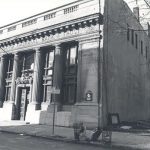
The Philadelphia Ten was all-women’s group of painters and sculptors that exhibited together for nearly thirty years starting in 1917. Works of the Ten can be found at Woodmere Museum of Art on Germantown Avenue.

Relations between Philadelphia and Puerto Rico reach back to colonial times. Today, North Fifth Street's “El Bloque de Oro,” or “Golden Block,” remains a vibrant neighborhood of Latino culture and commerce.

The Spanish-American War had a significant influence on Philadelphia, and the USS Olympia, the flagship of the U.S. Asiatic Squadron, is permanently moored as Penn's Landing.

In 1926, the National Motor Racing Association constructed one of the nation’s first purpose-built dirt speedways in Langhorne.

The Philadelphia International Cycling Classic made famous the “Manayunk wall,” where thousands of spectators lined Lyceum Avenue to watch cyclists ascend the 285-foot climb with a 17 percent grade at its steepest segment.

Since the early nineteenth century, a number of historical societies have called Philadelphia home, from small religious and local history groups to the Historical Society of Pennsylvania.

Southeaster Pennsylvania and southern New Jersey were prominent iron producers. Hopewell Furnace, opened in the late eighteenth century, was one of the early iron plantations.

A prime riverfront location and convenient transportation made Norristown Montgomery County's center for both industry and leisure, but its fortunes changed in the later half of the twentieth century.

WHYY moved into television programming in 1957, broadcasting from studios at 1622 Chestnut Street—a renowned Art Deco building formerly home to WCAU.

From a quiet holiday for visiting friends, to Mummers and fireworks, Philadelphians have always loved to celebrate New Year's. With new immigrants came new holiday traditions. The Mummers Museum is on 'Two Street.'
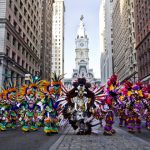
Southern Italian immigrants brought recipes from their homeland to Philadelphia including tomato pie, a pizza-like creation with a thick crust, tomato gravy, and a dusting of cheese. Sarcone's on Ninth Street is one of the purveyors.

Over 10,000 African Americans from the Philadelphia area enlisted in the United States Colored Troops during the Civil War and trained at Camp William Penn. Some earned the highest military accolades for their service.

The roots of the National Guard trace to Philadelphia and congressional action during the city’s decade as U.S. capital. Pennsylvania, New Jersey, and Delaware all have Guard units, including the 177th Fighter Wing at Atlantic City Airport.

High labor costs, evolving technology, and changing tastes led industry to flee Philadelphia, leaving in its wake unemployment and scarred neighborhoods. At Broad and Lehigh, the Botany 500 building once was a Ford plant where soldiers' helmets were produced for WWI.

From colonial militias to Cold War fallout shelters and nuclear bomb drills, Philadelphia's citizens have prepared for disaster throughout the city's history. Civil Defense remnants still show up, including fallout shelter signs at City Hall.

Shoemaking was a large and influential occupation in early Philadelphia. In 1827, cordwainer William Heighton founded the Mechanics' Free Press and helped found the Mechanics’ Union of Trade Associations at Chestnut and Bank Streets.

Philadelphia was the cradle of the nation's rotary-wing aviation in the twentieth century. The Piasecki Aircraft Corporation, formed in 1955 and located in Essington, produced the world’s first shaft-driven compound helicopter in 1962.

High school sports programs began in the nineteenth century in Greater Philadelphia. The renowned Penn Relays draw high school and college track and field athletes from around the country.
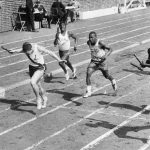
Hinterlands (Seventeenth and Eighteenth Centuries)
The bounty of the hinterlands helped fuel Philadelphia's progress. Hopewell Furnace, like other iron forges in the region during the colonial and early republic periods, supplied iron necessary for industry.

Nigerians became the second-largest African population in the Delaware Valley early in the twenty-first century, leading development of the new Pan-Africanism. The African Cultural Center is on Springfield Avenue.

The City Beautiful Movement had significant influence on Philadelphia, including Rittenhouse Square, redesigned in 1913 with diagonal walkways, fountains, tree plantings, and sculptures. 'Billy' is a public favorite at the southwest corner.

During the Vietnam War era, demonstrations were common at JFK Plaza near City Hall as well as symbolic sites such as the Liberty Bell and Independence Hall.

Philadelphia suffered many epidemics in its early years, and Pennsylvania Hospital on Spruce Street was in the forefront of battling them. Most were overcome by the early twentieth century, but some, like polio and HIV, posed new challenges.

In 1961, the legendary Blue Horizon opened its doors to professional boxing shows on North Broad Street in North Philadelphia. For most Philadelphia boxing fans who packed the hall, the former Moose Hall was Mecca.
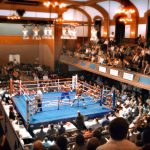
Immaculata University is the home of the historic Mighty Macs women's basketball team
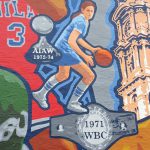
The early 1950s conflict between North Korea and South Korea had a big impact on Greater Philadelphia, leading to a surge in shipbuilding employment and the deaths of hundreds of local servicemen.

Community Development Corporations (CDCs)
The Garden Center, funded by the New Kensington Community Development Corporation, was among CDCs that helped to rebuild some of Philadelphia’s neighborhoods.

Greater Philadelphia was a chemical center from the eighteenth century. In 1864, Harrison Brothers opened a massive facility on Gray's Ferry Avenue. In 1917, DuPont purchased the entire Harrison Brothers enterprise.

Meteorology (Study of the Atmosphere)
Philadelphians have pursued significant scholarly and popular interests in meteorology since the eighteenth century. The National Weather Service provides local forecasts from its base in Mount Holly, N.J.

Many pioneers in the field of ornithology called Philadelphia home, including Alexander Wilson and John James Audubon, who was based near a town that changed its name to Audubon.

Presidents of the United States (Connections to Region)
U.S. presidents have long visited Philadelphia to invoke the historic values of the country's founding documents. Independence Hall has been the backdrop for many such visits, beginning in 1833 with Andrew Jackson.

Veterans and Veterans’ Organizations
Military veterans began organizing during the waning days of the Revolutionary War and continued to form organizations such as the Philadelphia Veterans Advisory Commission, established in 1957 and located in City Hall.

Although early industrialization took root mainly in urban centers, a substantial share of the Philadelphia region’s manufacturing sprang up in small towns outside the city. The main building of the Lee Tire and Rubber Company was built in 1909 in Conshohocken.

Coffeehouses have been an integral part of the region's social fabric since the eighteenth century. The Old London near the Delaware River waterfront was Philadelphia’s leading coffeehouse in the 1760s, owned by printer William Bradford.

Public markets in Philadelphia belong to an ancient tradition of urban food provisioning. The Reading Terminal, which opened in 1892, opened a new era for urban food marketing and distribution.

Though it existed for less than twenty years, the colony of New Sweden had lasting effects on the Greater Philadelphia area. Historical sites from the colony remain standing to this day.

The history of barbering in Philadelphia reflects trends in the region and nation, with barbering dominated by marginalized groups. Joseph Cassey, a free African American, found success in early nineteenth-century Philadelphia with his white-only barbershop.

In his Paoli Studio, Wharton Esherick crafted iconic pieces of twentieth century American Art.
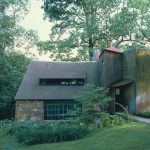
Land, the most valuable commodity during the colonial era, had to be surveyed before it could be granted or transferred. Pennsylvania's first surveyor-general, Thomas Holme, is commemorated with a marker on Holme Avenue in Northeast Philadelphia.

In 1681 the king of England granted William Penn a charter to found Pennsylvania, but the colony did not evolve exactly as Penn had foreseen it. Among the First Purchasers were Germans who called their section Germantown.

Philadelphia had many roles in the growth of commercial radio, including the manufacture of radios. For a few years, Atwater Kent, with a plant on Wissahickon Avenue, was the country's top radio maker.

Country clubs originated in the 1890s as elite, family-oriented havens usually emphasizing golf. Among the earliest clubs was the Philadelphia Country Club, now located in Gladwyne.
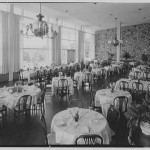
After decades of political and construction delays, the twenty-one mile Blue Route--Interstate 476 between Interstate 95 to the south and the Pennsylvania Turnpike to the north--opened to traffic in late 1991.

Camden thrived during the industrial revolution of the late nineteenth century, but as industry left in the late twentieth century, the city struggled in many ways.
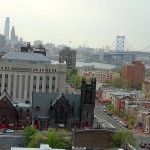
The waste ash that was loaded onto the Khian Sea and spent years being moved around the world originated in Roxborough at the Northwest Incinerator, which is no longer in use.

King of Prussia prospered early because of its location one day's horse ride from Philadelphia. In the twentieth century it grew because of its location near busy crossroads, first as as a business park, then as a shopping mecca.
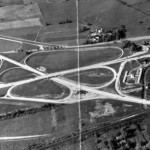
Naturalists and illustrators helped make Philadelphia a center for the study of insects—entomology—as early as the eighteenth century. The butterfly collection of Titian Peale today resides in the Academy of Natural Sciences of Drexel University.
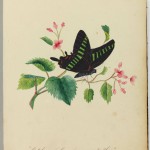
Bank of the United States (First)
Originally located in Carpenters' Hall, the First Bank of the United States relocated to 116 S. Third Street in 1797.

Typhoid Fever and Filtered Water
Typhoid fever and other disease outbreaks associated with contaminated water compelled Philadelphia to build filtering plants in the early 1900s, including one in the Roxborough section.

Prior to European settlement, a complex system of overland paths crisscrossed the region from the Atlantic coast and west into the Wyoming Valley. The Minquas Path ran south of Moylan, Delaware County.
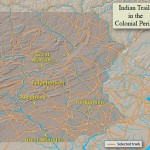
Until the 1890s, Windmill Island sat in the Delaware River between Philadelphia and Camden, first as one island and then two after a canal was cut. The canal would have been across from what in the twenty-first century is the Philadelphia terminus of the RiverLink ferry.

Puerto Ricans migrated to the Philadelphia region in search of economic opportunity. The clustering of Puerto Rican-owned businesses around Fifth Street and Lehigh Avenue developed into the “Golden Block” (El Bloque de Oro) retail area.

The Model Cities program called for federal services to redevelop the nation’s poorest communities. In 1967, North Philadelphia was designated for renewal, but efforts faltered and goals changed, with a textile company moved from North Broad Street to Spring Garden and Seventh Street.

Prehistoric Native Americans and Archaeology
Since the late nineteenth century, archaeologists have been digging for remnants of Native American life in the Philadelphia area, including a rural site in Pilesgrove Township, Salem County, N.J.

First Purchasers of Pennsylvania
The First Purchasers were several hundred people and groups who initially bought land from William Penn's, including a group of German investors, led by Daniel Pastorius, who received 15,000 acres that became Germantown.

Beginning in the 1920s, the Philadelphia region’s independent transit companies added motorized buses. The south east corner of 13th and Filbert Streets marks the location of the old Union Bus Terminal. Today, The Greyhound station on Filbert Street is just a few blocks away from the old Union Bus Terminal, which was a Thirteenth and Filbert.

The Lower Counties, once a part of Pennsylvania that eventually became the state of Delaware, included Fort Christina, built by the New Sweden Company in 1638. The site is now part of the First State National Historical Park.

Planned as an aesthetically pleasing gateway between Philadelphia and Camden, Admiral Wilson Boulevard became a route tarnished by crime and sex work before it was cleaned up in anticipation of the Republican convention of 2000.

Dozens of co-working spaces opened (and some failed) in the early decades of the twenty-first century in Greater Philadelphia, including the pioneering Indy Hall on North Third, offering shared work space designed to foster a collaborative atmosphere

Founded in the 1850s, Atlantic City was the first great middle-class resort in the nation. The Steel Pier became one of the most famous entertainment piers in the United States.

The Friends Select School has helped make education accessible to every student, continuing a legacy that started with the first Quaker 'select school' in 1689.
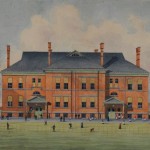
Since the dawn of rail transportation, Philadelphia has been home to a number of grand railroad stations.

The polluted land known as “brownfields” resulted from Greater Philadelphia's industrial heritage, but remediation has turned many tracts into productive sites, including PPL Park, a soccer stadium and concert venue that opened in 2010 in Chester.

Vigilance Committees (sometimes called Vigilant Committees) formed to protect fugitives and potential kidnap victims. Robert Purvis was one of Philadelphia's most prominent abolitionists. His home at Ninth and Lombard Streets had a secret area for hiding slaves.

Cars became a prominent force in Philadelphia's development, and by the end of World War I, Philadelphia's "automobile row" stretched from Spring Garden along North Broad Street roughly to Girard Avenue.

Car manufacturing once provided thousands of jobs in Philadelphia, including many at the Ford assembly plant opened in 1914 at North Broad Street and Lehigh Avenue. During the war, the military made helmets there.

The central event in the novel, 'The Garies and Their Friends,' is a graphically-rendered race riot, evoking the historical riots of 1834, 1838, 1842, and 1849. One of these riots, the Lombard Street Riot, has a historical marker located at Sixth and Lombard Streets.
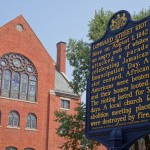
Native American-Pennsylvania Relations 1681-1753
The 1737 Walking Purchase in Bucks County is just one example of interaction between colonists and the Lenapes, or Delawares, who had been dealing with Dutch and Swedish colonists for decades.

The Schuylkill canal, built by the Schuylkill Navigation Company, connected Philadelphia with the rich natural resources of inland Pennsylvania. Part of the canal survives along the Manayunk Canal Towpath.

The former location of the Dock Street Market, established in 1850, was home to numerous street vendors until its demolition in the 1950s.

Outside the urban core of Philadelphia, the picturesque rural landscape proved a significant draw to many artists in search of the purportedly simple, wholesome, and moral quality of countryside living. Prominent among the art colonies was Rose Valley, near Moylan, Pennsylvania.

Delaware Valley Regional Planning Commission
The regional planning commission serves the interests of Phila and surrounding counties, proving studies for long-range planning. DVRPC's main office is located on Independence Mall West.

Philadelphians raised money in one week during June 1798 to build the USS Philadelphia to help increase American naval power to protect commerce. The frigate was built at Humphrey’s & Wharton Shipyard on the Delaware River.

Philadelphia has been used as the setting of many recent films, but the industry's history in the city dates back to its very birth in the 1890s. In the early 1900s, Lubin Studios in North Philadelphia was a pioneer in silent film production.
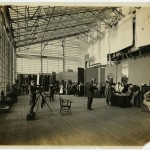
Point Breeze, Joseph Bonaparte’s Country Estate
Joseph Bonaparte, older brother to Napoleon and former king of Spain, lived in an opulent New Jersey estate in the years after his brother's fall from power.

Levittowns of Pennsylvania and New Jersey
The iconic Levittown communities—the first in Long Island, New York, and the subsequent two in Bucks County, Pennsylvania, and Burlington County, New Jersey—endure as symbols of the unique character of post-World War II U.S. suburban development.

The discovery of oil in Titusville, Pennsylvania, and the drilling of the first successful well in 1859 led to an oil revolution. Soon pipelines emerged as a key to oil transport, and pipeline growth continues today. Some lines reach refineries at Marcus Hook, near the state line between Pennsylvania and Delaware.

Radio (High School and College)
From radio’s earliest days, Philadelphia-area college and high school students have tested its boundaries. On Chestnut Street, Drexel University’s WKDU regularly welcomed local talent into its studio for live events, as did WPEN, which lent its studio to college broadcasters.

Streetcar suburbs blossomed throughout the Philadelphia area in the late nineteenth and early twentieth centuries, as streetcar lines radiating from the city's heart allowed people to move further into its fringes.

Built between between 1903 and 1914, Roosevelt Boulevard began in an era of political corruption but became a vital factor for later development of Northeast Philadelphia.

The Vine Street Expressway runs between the Delaware and Schuylkill Rivers. Plans for its construction were delayed for decades due to the impact it would have on neighborhoods like Chinatown.

Beginning in the mid-nineteenth century, Philadelphia became a leading center of printmaking in the U.S., a legacy that lives on at sites such as the Brandywine Workshop on Broad Street.
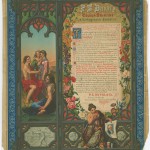
During Prohibition, Philadelphia earned a reputation rivaling Chicago, Detroit, and New York City as a liquor-saturated municipality. Near Thirteenth and Locust Streets was The 21 Club, one of Max “Boo Boo” Hoff’s speakeasies.

Martin Luther King Jr. Day observances have been held annually in Philadelphia since the 1970s. A focal point is Girard College, where King held a rally in 1965, as well as a ceremony at the Liberty Bell.
Media was built on farmland in the 1850s as the new seat of Delaware County. Twelve miles from Philadelphia, Media is an early example of a “planned community,” both a commercial center and a place to conduct government business. The Media Theatre served as a movie palace for almost 75 years.

Small farms and larger properties called plantations drove the Mid-Atlantic's colonial economy. The Colonial Pennsylvania Plantation is a living history site focusing on 1760-90 farm life in southeast Pennsylvania.
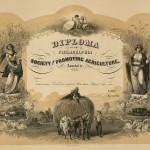
During Prohibition, Philadelphia earned a reputation rivaling Chicago, Detroit, and New York City as a liquor-saturated municipality. Near 13th and Locust Streets was The 21 Club, one of Max “Boo Boo” Hoff’s speakeasies.

Tension over abolition led to a number of riots, one of the most notable being the 1838 destruction of Pennsylvania Hall, a meeting place for antislavery groups on Sixth Street about two blocks north of Independence Hall.

In 1798, a new federal tax and the Alien and Sedition Acts sparked resistance in several counties near Philadelphia. Ringleader John Fries was convicted of treason but pardoned. One clash between federal agents and resisters was at a tavern in Quakertown.

In the nineteenth century, Philadelphia became the center of the American map publishing industry. Franklin Maps in King of Prussia carries on that tradition today.

The National Park Service uses parks and sites to preserve historical, cultural, and natural resources for future access and education. The Independence National Historical Park contains over thirty sites covering centuries of Philadelphia’s history.

The American Philosophical Society, located here in Philosophical Hall, received specimens from Lewis and Clark's expedition to the West.

Chester was once a booming industrial city and housed one-third of the population of Delaware County. The city supported iron works, locomotive works, paper mills, oil refineries and a ship yard in the years after the Civil War, but industrial jobs vanished in the twentieth century.

Pennsylvania Impressionist painting flourished in eastern Pennsylvania in the first half of the twentieth century. Often referred to as the “New Hope School” because artists in Bucks County produced the best-known works, the style was also practiced vigorously in Montgomery, Chester, Delaware, and Lehigh Counties, and key artists of the movement taught at the Pennsylvania […]

Native and Colonial Go-Betweens
In the colonial era, as conflict between the Europeans and displaced Native American tribes rose, go-betweens helped soothe tensions. Native Americans and Europeans met near Second and Market Streets in 1728 in response to tension on the western frontier.

Private schools satisfied a need felt by wealthy, white families to educate their children in selective cultural and intellectual environments. William Penn Charter and other private schools became more alike through changes in the twentieth century.

Lincoln Financial Field, home of the Philadelphia Eagles, a team that has dominated the city's sports affections since the 1960s.

Native American-Pennsylvania Relations, 1754-89
From 1754-89, relations between Pennsylvania and native tribes eroded badly. By 1789, only one enclave remained, as others were pushed westward or killed in fights with settlers. Near Conestoga, Pa., was the site of a massacre by the Paxton Boys.

'Appeal of Forty Thousand Citizens'
Musical Fund Hall is where a convention altered the Pa. Constitution to disallow voting by black residents, a move that inspired the essay 'Appeal of Forty Thousand Citizens, Threatened with Disfranchisement, to the People of Philadelphia,' which argued against ratification.

At Duffy’s Cut, a railroad construction site in Chester County, Pennsylvania, fifty-seven Irish immigrant railroad workers died amid a cholera epidemic in the summer of 1832 and were buried in a mass grave.

Forts and other defenses on the Delaware River and, later, along the Atlantic coast guarded Philadelphia and other commercial centers during times of military jeopardy. Fort Mifflin and other surviving forts serve as reminders of the key role forts played in the region's economic, political, and social history.

In the late twentieth and early twenty-first centuries, casino gambling became an accepted public policy in Pennsylvania, New Jersey, and other states desperate to generate tax revenue and create jobs. But the gains often came with significant social and economic costs in Atlantic City, Philadelphia, and other communities in the region.

Often branded the 'Surekill Distressway,' the Schuylkill Expressway, connecting the Heart of Philadelphia to the northwestern suburbs, has been on of Pennsylvania's popular and congested highways.

The Walking Purchase, in which three 'walkers' started at this point and traveled for a day and a half northeast, defrauded the Delaware Indians out of a vast amount of land.

On October 10, 1871, during a tumultuous and racially polarized Election Day in Philadelphia, Ocatvius V. Catto was shot around here on south street, a block away from his home. Catto spent his life fighting against segregation and discrimination.

By supplying provisions to British military troops or providing safety in the form of row houses on Pine Street for 450 Acadians fleeing Nova Scotia, Philadelphia played a significant role in the Seven Years' War.
Colonization Movement (Africa)
The African colonization movement was a nineteenth century attempt to resettle free Black people from North America to countries like Liberia. The Pennsylvania Colonization Society had offices here, and raised funds for the costs of traveling to Liberia.

Trenton and Princeton Campaign
One of the most significant events in the Revolutionary War was the Continental Army’s crossing of the Delaware River, which preceded three crucial American victories that reignited the virtually extinguished Patriot cause.

Philadelphia's role in the development of television began in the 1930s when solitary inventors and corporations began investigating the possibility of transmitting moving images over the air to a home receiver. Today, the Comcast building is the tallest in the city.

The Mason-Dixon Line, which settled a border dispute dating back to the founding of Philadelphia, is the southern boundary of Pennsylvania. The line separates Pennsylvania from Maryland and West Virginia along the 39º43ˊ N. parallel and bounds Delaware along an arc.

Hog Island was once an agricultural island in the Delaware River until the Twentieth Century, when sands and soils from river dredging connected it to the shore. The new, featureless, land was suitable for industry and development.

The U. S. Congress met in Philadelphia for ten years, testing the endurance of the Constitution and set the groundwork for future political practice.

Although Christopher Columbus never sailed to Philadelphia, memorials and annual celebrations since the nineteenth century have reminded generations about his historic voyage.

Philadelphia Industrial Development Corporation
The PIDC is a nonprofit organization that is focused on supporting existing businesses in the City of Philadelphia, while attracting new industrial and commercial development through land development programs.

Immigration and Migration (Colonial Era)
Diverse peoples immigrating or migrating from Europe, Africa, and other American colonies before the Revolutionary War turned Philadelphia into colonial America's largest city.

Philadelphia's cemeteries have matured over time from small, private grave sites and potters fields scattered throughout the city to expansive rural cemeteries and memorial parks that honor the lives of the past.

Philadelphia baseball teams like the Phillies and the Athletics have played in numerous fields across the city, while entertaining and connecting generations of Philadelphia residents together.

Although the United States’ involvement in World War I lasted just over a year, the conflict in Europe had a lasting impact on the Philadelphia region. The war created new opportunities for the region's industrial base, including the New York Shipbuilding Corporation of Camden.

Pontiac’s War and the Paxton Boys
As a result of Pontiac'c War and the shifting opinions of Native Americans by rural Pennsylvania residents, the vigilante group known as the Paxton Boys were stopped by a militia in Germantown during their attempt to enter Philadelphia.

Preserved for its eighteenth-century significance as an encampment of the Continental Army during the American Revolution, Valley Forge has a more extensive past and continues to play an integral role in the region’s history and environment.

During the national explosion of immigration that took place between 1870 and the 1920s, the Philadelphia region became more diverse as it was energized by German, Italian, Jewish, and Spanish immigrants who changed the character of the places they settled.

Higher Education: Private (Religious)
The religious diversity of Philadelphia led to the creation of specialized institutions of higher learning reflecting each religion's values. Catholic-affiliated schools continue to embrace their religious banner, less so those schools with different affiliations.

For eight remarkable decades, local Philadelphia fans consistently supported a series of Black baseball clubs whose successes generated racial pride and represented a triumph of African American institution-building.
The educational opportunities in Philadelphia have expanded greatly for students throughout the twentieth century, but the result has been a greater inequality between public and private schools.

A three-week trek from Philadelphia to New York by striking child and adult textile workers launched on July 7, 1903, by Mary Harris “Mother” Jones, trained public attention on the scourge of child labor and energized efforts to end it by law.
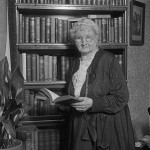
In the second half of the twentieth century, many parents moved their families out of Philadelphia, Camden, or Wilmington so that their children could enroll in suburban public schools because they perceived them to be better than their urban counterparts

People of African descent have migrated to Philadelphia since the seventeenth century. Although African Americans faced discrimination, disfranchisement, and periodic race riots in the 1800s, the community attracted tens of thousands of people during World War I's Great Migration.

In Camden, New Jersey, the Victor Company in the early 1900s was nation’s largest manufacturer of musical recordings.

Byberry (Philadelphia State Hospital)
From the arrival of its first patients in 1911 to 1990, when the Commonwealth formally closed it down, the Philadelphia State Hospital, popularly known as Byberry, was the home for thousands of mental patients.

The revival of immigration to Philadelphia and its surrounding region in the early nineteenth century provided one of the most powerful elements in reshaping the city's society. The German Society of Pennsylvania assisted German newcomers in finding jobs and housing.

For more than 150 years streetcars have served the Philadelphia area and helped Center City Philadelphia retain its commercial, retail, and entertainment supremacy in an ever-expanding region.

The region experienced severe economic hardship and fundamental change during the Great Depression. The Erie National Bank of Philadelphia, shown here, suffered a bank run in 1931.

For most of the decades since the United States’ immigration restriction acts of the 1920s, Philadelphia was not a major destination for immigrants, but at the end of the twentieth century the region re-emerged as a significant gateway.

In the U.S., Philadelphians initiated the transition from imports and small-scale preparation to large-scale manufacturing of paint materials. Samuel Wetherill Jr. erected a factory in 1809 to produce lead pigments.

Printing and Publishing (to 1950)
As Philadelphia evolved into America’s largest port city, the number of printer-publishers operating within it grew. Philadelphia’s colonial printers generally located their shops close to highly trafficked areas.

Public transportation – consisting of vehicles that operate on fixed routes used by the public – began in the region in 1688 with a ferry between Philadelphia and what is now Camden, New Jersey.

Roman Catholic Education (Elementary and Secondary)
For more than three centuries Parochial schools in the Philadelphia region have responded to the changing characteristics of the region’s Catholic population.

In the decade immediately following World War I, commercial real estate developers and department store owners devised new strategies to make retail shopping accessible to the area’s growing suburban communities.

Fox hunting became a popular leisure activity in the Philadelphia region during the eighteenth and nineteenth centuries. In October 1766, twenty-seven Philadelphia professionals founded the Gloucester Fox Hunting Club, the first of its type in America.

Delaware Avenue (Columbus Boulevard)
Delaware Avenue played a significant role in the development of the city's maritime activity.

Public Education: High Schools
Greater Philadelphia has been notable in the development of secondary education in the United States. Central High School, est. 1838, provided education to middle-class boys.

American Civil Liberties Union (ACLU)
The American Civil Liberties Union, a national legal organization, organized in Philadelphia in 1951.
The Consolidation Act of 1854 extended Philadelphia's territory to nearly 130 square miles, making Northeast Philadelphia and other sections outside Center City part of the city of Philadelphia.
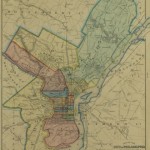
The Delaware River Port Authority was created nearly 100 years ago as a bi-state commission for the purpose of building a single toll bridge. A 1992 amendment gave the DRPA two new mandates–port unification and economic development-- both of which proved to be difficult to implement.

Philadelphia and surrounding southeastern Pennsylvania, Delaware, and New Jersey riverfront ports developed one of the greatest shipbuilding regions in the United States.

In the colonial era linen and flaxseed were fundamental to the mercantile life of Philadelphia and the Delaware Valley. Philadelphia's linen and flaxseed market extended from the farthest point of settlement, Fort Pitt, to the fields of England and Ireland.
Industrial Workers of the World
In the early 1900s thousands in greater Philadelphia belonged to the IWW. Local 8, which organized the city’s longshoremen, was the most powerful and racially inclusive branch in the Mid-Atlantic.
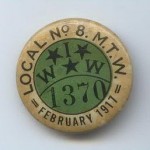
Commuter trains have helped to shape and define Philadelphia and its region since their introduction in 1832. Trains influenced suburban development and provide a “green alternative” to crowded highways systems.

Philadelphia and Its People in Maps: The 1790s
Philadelphia was the premier urban city in North America during the Early National era. Using GIS technology, maps visualize the city between 1790 and 1800, when it was the capital of the United States.
As the dominant response to the housing needs of low-income residents since the 1930s, public housing in the Philadelphia region provided shelter for thousands. The Carl Mackley Houses opened in 1935 in the Juniata Park neighborhood.

Doctors in Philadelphia diagnosed the first local case of what would later become known as AIDS 1981.The Mazzoni Center formed the Philadelphia AIDS Task Force to provide social services to those affected.
World War II, which created change for industries, populations, and politics in many urban areas in the United States, had a transforming effect on the Philadelphia region.
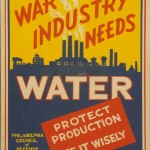
Yellow Fever hit Philadelphia with a vengeance in 1793. Beginning from a cluster of infections near the Delaware waterfront, the fever spread rapidly through the summer and autumn, fueling panic throughout the city.

Influenza (“Spanish Flu” Pandemic, 1918-19)
The influenza virus that killed millions of people worldwide began its deadly ascent in Philadelphia after sailors, carrying the virus from Boston, arrived at the Philadelphia Navy Yard in early September 1918.
Led by John Wanamaker, Philadelphia's Market Street department stores became the national model. Known as the "Big Six," these businesses were close to the city's rail terminals and subway stations.

An expanding network of trails has allowed hikers, runners, and cyclists to explore their surrounding environments while meeting their recreational needs. Trails like the Schuylkill River Trail cover more than 160 miles.

Between 1674 and 1702, New Jersey was divided in half, with the West New Jersey colony facing the Delaware River. Settlements like Burlington retained a distinct political and social identity, even after falling into Philadelphia's economic orbit.

A region synonymous with gracious living and cultural tourism, the Brandywine Valley has drawn visitors from around the world to enjoy its many public gardens, house museums, and historical attractions.

Philadelphia was the first American city to establish “percent for art” programs, which have funded works including "MVP,” a statue of a Black female athlete in Smith Park in South Philadelphia.

Philadelphia has been at the forefront of women's civil rights activism from its inception to the 21st century. Paulsdale is the preserved childhood home of women's civil rights activist Alice Paul and location of the Alice Paul Institute.

Extending through West Philadelphia into Philadelphia’s western suburbs, Lancaster Avenue has defined a corridor for commerce and community development from the colonial era to the twenty-first century.
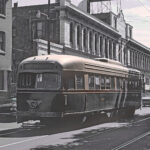
Timeline
Related Reading
Adams, Carolyn, et. al. Philadelphia: Neighborhoods, Division, and Conflict in a Postindustrial City. Philadelphia: Temple University Press, 1991.
Adams, Carolyn, et. al. Restructuring the Philadelphia Region: Metropolitan Divisions and Inequality. Philadelphia: Temple University Press, 2008.
Black, Brian C., and Michael J. Chiarappa. Nature’s Entrepot: Philadelphia’s Urban Sphere and Its Environmental Thresholds. Pittsburgh: University of Pittsburgh Press, 2012.
Cammarota, Ann Marie T. Pavements in the Garden: The Suburbanization of Southern New Jersey, Adjacent to the City of Philadelphia, 1769 to the Present. Madison, N.J.: Fairleigh Dickinson University Press, 2001.
Conn, Steven. Metropolitan Philadelphia: Living With the Presence of the Past. Philadelphia: University of Pennsylvania Press, 2006.
Landsman, Ned C. Crossroads of Empire: The Middle Colonies in British North America. Baltimore: Johns Hopkins University Press, 2010.
Lanier, Gabrielle M. The Delaware Valley in the Early Republic: Architecture, Landscape, and Regional Identity. Baltimore: Johns Hopkins University Press, 2005.
Lindstrom, Diane. Economic Development in the Philadelphia Region, 1810-1850. New York: Columbia University Press, 1978.
Related Collections
Philadelphia
Historical Society of Pennsylvania, 1300 Locust Street, Philadelphia.
Philadelphia City Archives, 3101 Market Street, Philadelphia.
Urban Archives, Special Collections Research Center, Temple University Libraries, 1900 N. Thirteenth Street, Philadelphia.
Southeastern Pennsylvania
Bucks County Historical Society, 84 S. Pine Street, Doylestown, Pa.
Chester County Archives, 601 Westtown Road, West Chester, Pa.
Chester County Historical Society, 225 N. High Street, West Chester, Pa.
Delaware County Archives, 340 N. Middletown Road, Lima, Pa.
Delaware County Historical Society, 408 Avenue of the States, Chester, Pa.
Montgomery County Archival Records, 2000 Old Arch Road, Norristown, Pa.
Historical Society of Montgomery County, 1654 DeKalb Street, Norristown, Pa.
South Jersey
Burlington County Historical Society, 451 High Street, Burlington, N.J.
Camden County Historical Society, 1900 Park Boulevard, Camden, N.J.
Gloucester County Historical Society, 17 Hunter Street, Woodbury, N.J.
Salem County Historical Society, 83 Market Street, Salem, N.J.
Delaware
Delaware Public Archives, 121 Martin Luther King Jr. Boulevard North, Dover, Del.



